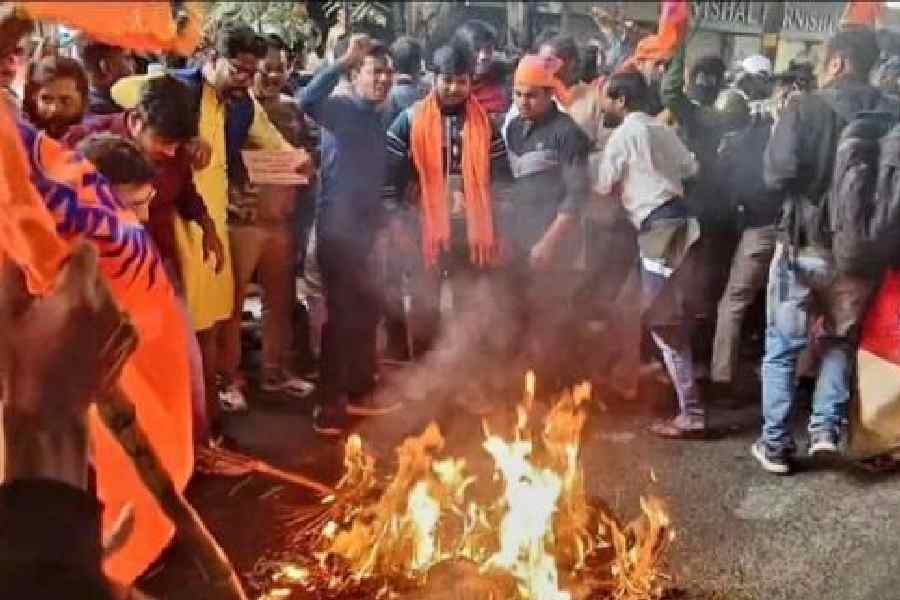Local trains will leave Howrah and Sealdah stations before dawn on Wednesday, more than seven months after suburban services had been suspended to prevent the spread of Covid-19.
The first train from Sealdah to Budge Budge is scheduled to leave at 3.45am and the first train from Howrah to Tarakeswar at 4.22am, a rail official said.
The suburban services will start with close to 700 trains in the Sealdah, Howrah and Kharagpur divisions combined. It is less than 50 per cent of the number before the pandemic.
The state’s chief secretary has called the resumption of services a “very sensitive trade-off” between livelihood and public health.
The suspension of local trains has crippled the livelihoods of tens of thousands of people. At the same time, doctors have warned of a possible surge in Covid-19 numbers as local trains start running.
Metro takes stock of the situation on the eve of the resumption of services.
Police deployment
The RPF, GRP, and state police are expected to stop people without masks and tickets from entering stations.
The city and Bidhannagar police are expected to deploy cops at stations in its jurisdiction — close to 25 in the Sealdah division. Random thermal screenings and staggered entry of passengers are on the cards.
“If the platform appears crowded, passengers will be stopped in the concourse area for a while. If the concourse is full, people will be asked to wait outside the station,” an officer said. The arrangement will be similar to the crowd-control mechanism at Metro stations during Durga Puja.
Questions
Staggered entry is unlikely to have much impact if there is no crowd-control at suburban stations.
The state government has asked district administrations to be on their toes and coordinate with the railways to ensure the standard operating procedure it issued on Monday is implemented.
Busy stations will have only one or two gates for entry and exit. The others will remain shut, a rail official said.
But the fact that any person with a valid ticket is entitled to enter a station and board a train makes the job of maintaining distancing practically impossible.
The Sealdah division has close to 175 suburban stations. The administration is looking at more than one person in uniform at every station.
The prospect of a couple of cops versus a few hundred passengers — the rush used to be way more at several nondescript stations during rush hour — is not good.
Multiple rail officials have said they have to bank on the “the awareness and good sense of people” to follow Covid-19 protocols.
Even if everyone wears a mask, a few hundred people holed up in a compartment will be a public health nightmare, doctors have said.
Representatives of the agency that has developed the Metro e-pass system were present at the meeting between government and rail officials at Nabanna on November 2. The meeting had been convened to work out the modalities of the resumption of services.
But government officials had said they did not want to implement an “exclusionary” tech-based solution similar to the one adopted by Metro Railway.
For passengers below 60, an e-pass is mandatory to enter a Metro station.
In the absence of such access-control mechanism, the risk of overcrowding looms large on stations and on trains.
Rush hour
The number of trains that will run between 8am and 11am and 4.30pm and 8.30pm can help ease the rush of passengers, a rail official said.
“We will run 148 trains during peak hours compared to the 177 before the pandemic,” the official said. The new fleet will be less than 50 per cent of what it was before the pandemic but the number of trains during rush hour is “around 84 per cent” of the earlier number.
The volume of passengers will go down because schools and colleges are shut and many senior citizens will avoid travelling on trains, another rail official said. “People who have no other option will travel by trains. Even a marginal dip in the passenger volume will help.”










